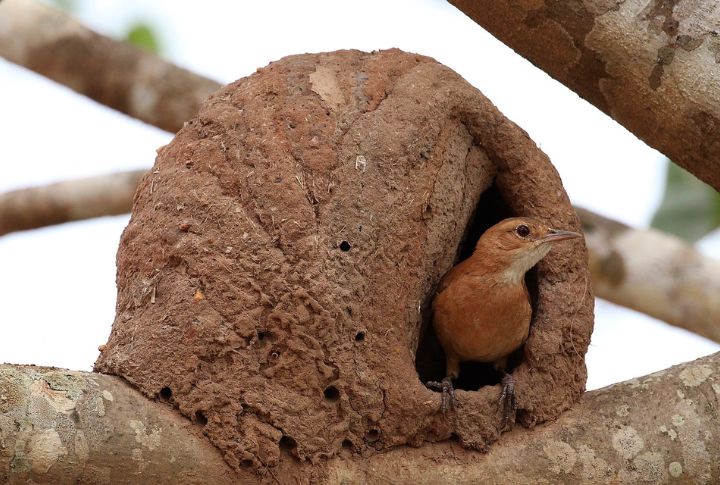
Not all nests are made of simple twigs and leaves on a tree. Some are sprawling, sky-high fortresses, while others stretch across entire lands. Designed for protection and survival, here are ten nest structures that showcase the incredible skills of the animal kingdom. Prepare to be stunned by nature’s most ambitious builders.
Bald Eagle’s Towering Tree Nests
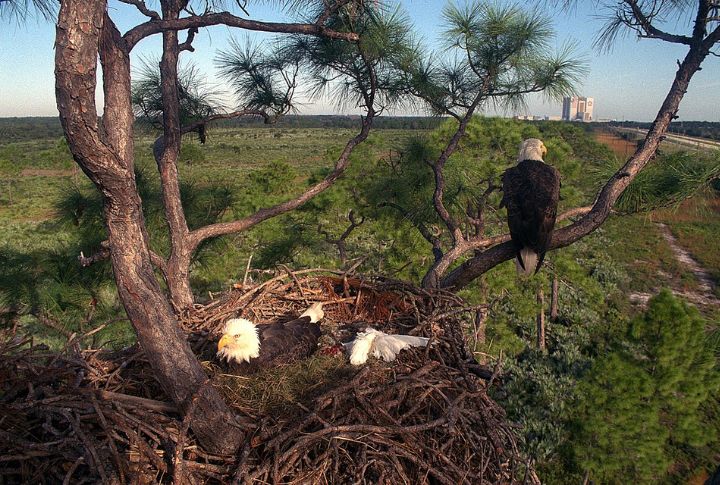
Perched high in sturdy treetops, bald eagles craft enormous nests, some spanning over 6 meters deep and weighing nearly 1.5 tons. These avian architects stack branches year after year and create massive platforms that can house multiple generations. One Florida nest even reached a record-breaking 6.1 meters in width!
Sociable Weavers Communal Nest Structures
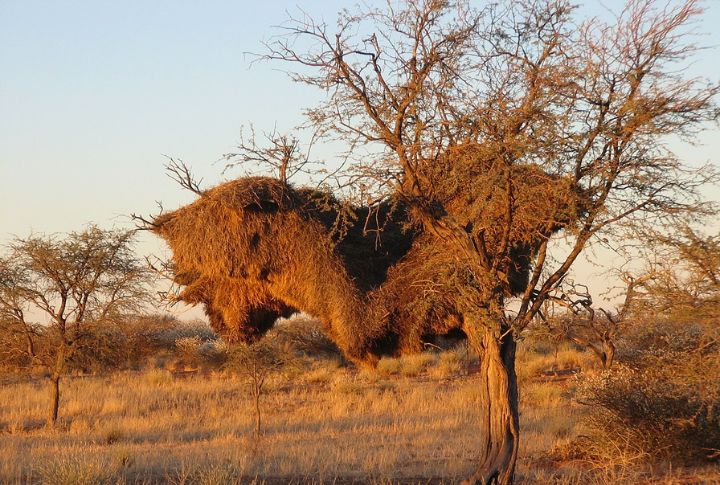
Providing heat in winter and cold in summer, such avian apartment complexes can remain occupied for generations. Huddled together beneath the African sun, sociable weavers construct sprawling communal nests that resemble a thatched roof. Some of these interconnected chambers shelter over 100 bird pairs.
Australian Malleefowl’s Massive Incubator Mounds
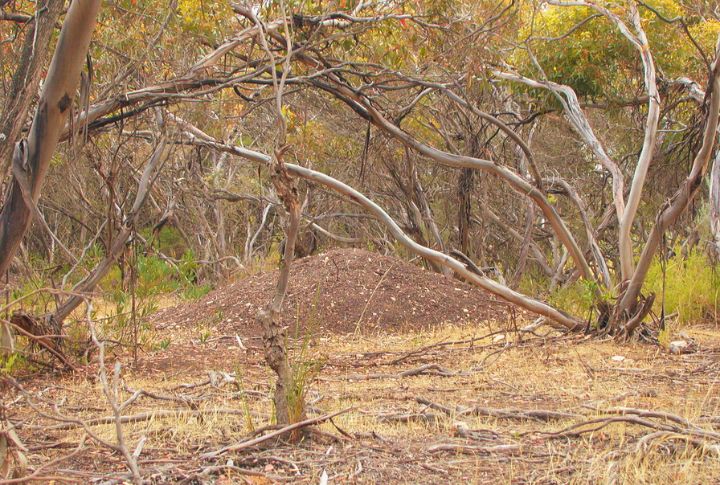
Unlike tree-dwelling nesters, the Australian malleefowl builds an earthen incubator, a towering mound that measures over 3-5 meters across. This self-heating nest, created from soil and decomposing leaves, allows eggs to develop at just the right temperature without direct parental incubation.
Horned Coot’s Stone Mound Nests
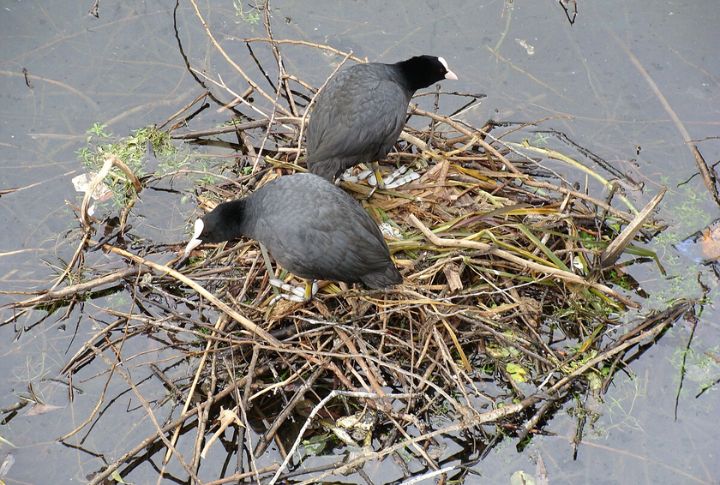
Horned coots put in some serious effort, hauling thousands of stones to create floating nests in the heart of the Andean wetlands. These impressive, rocky platforms rise above the water, weighing over a ton, and provide a safe haven for their eggs, shielding them from predators and unpredictable tides.
Red Ovenbird’s Durable Clay Nests
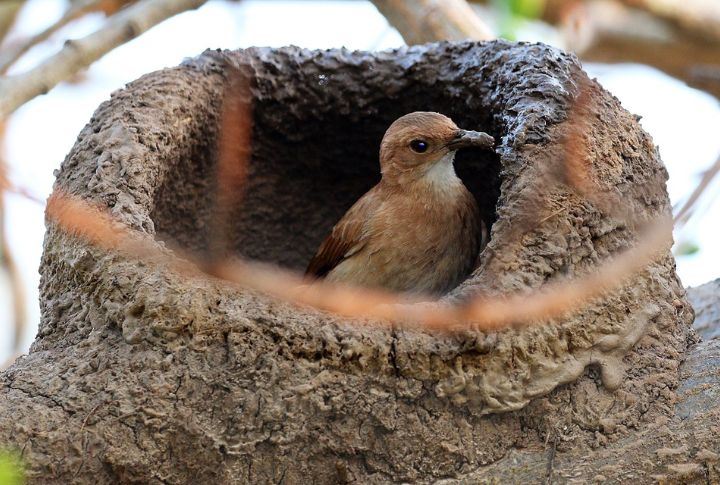
These domed structures, often seen on tree branches and poles, withstand extreme weather and predators, offering long-term shelter that can outlast even their creators. The red ovenbird’s hardened clay nests provide a near-impenetrable fortress against threats. Also, they are shaped like miniature adobe ovens.
Montezuma Oropendola’s Hanging Basket Nests
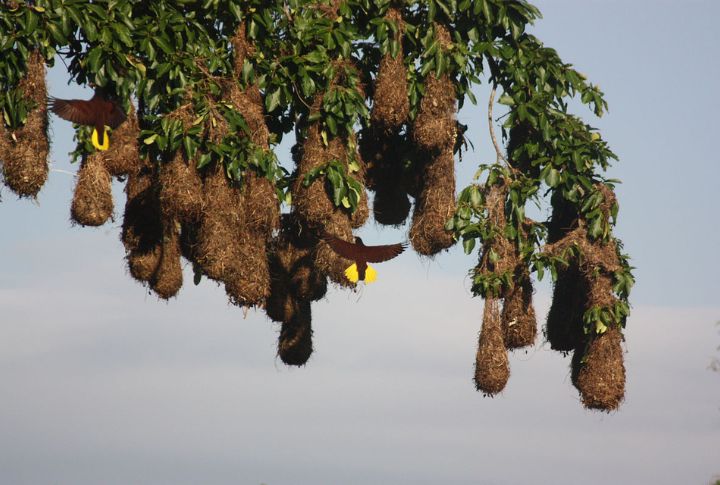
Montezuma oropendolas weave intricate hanging nests up to 1.8 meters long, which dangle from towering rainforest trees. Suspended like ornaments, the nests sway in the breeze, discouraging predators from climbing up. The birds form colonies and turn treetops into bustling, airborne neighborhoods.
European Beewolf’s Underground Nesting Complexes
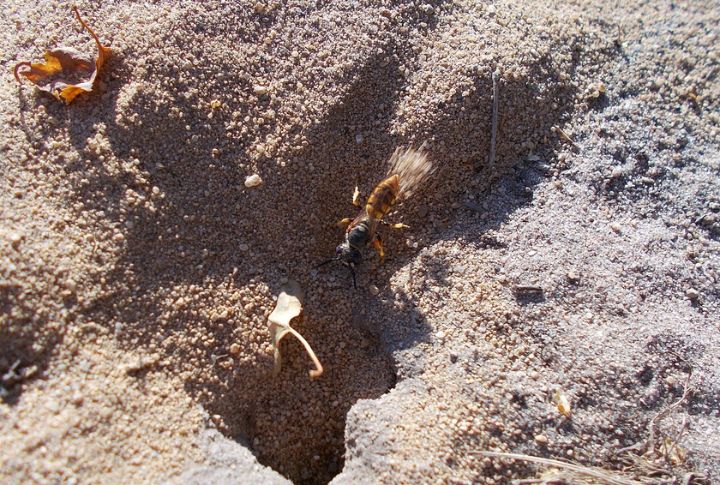
Instead of towering structures, European beewolves tunnel underground, creating a labyrinthine nest. These subterranean chambers house their offspring alongside paralyzed prey and ensure a continuous food supply. Despite being hidden from sight, their scale and complexity rival the nests of larger species.
Common Termite’s Towering Mounds

With self-regulating temperature control and complex air shafts, the architectural marvels sustain millions of termites and form entire subterranean cities beneath the towering spires. Termite mounds are among nature’s tallest insect-built structures and soar up to 7 meters high.
German Wasps’ Enormous Paper Nests
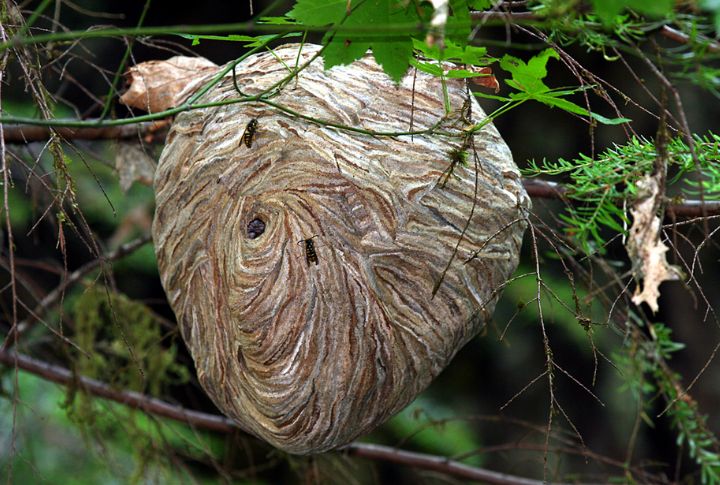
German wasps create massive paper nests, sometimes spanning over 3.7 meters, made from chewed wood pulp. These multi-layered walls protect thousands of inhabitants, with tunnels inside allowing smooth movement. The nests are a showcase of insect engineering, blending lightweight durability with intricate design.
Golden Eagle’s Expansive Cliffside Eyries
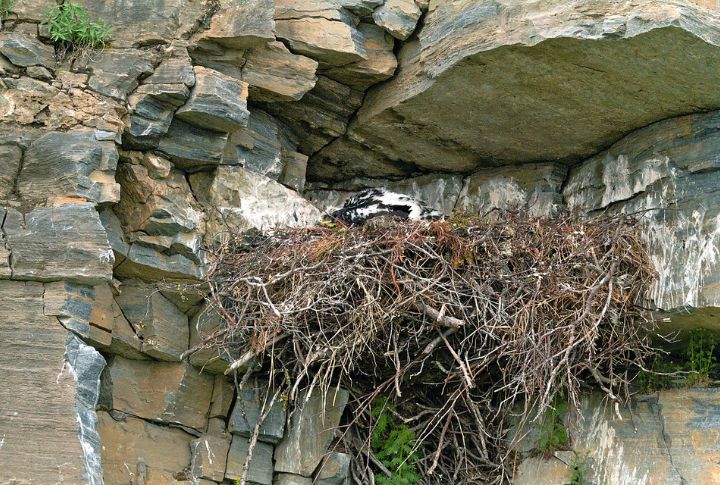
Golden eagle nests defy gravity by balancing on jagged cliffs. Built from sticks and bones, the eyries can last decades, with each generation adding layers of material. Some structures reach 2.5 meters wide and stand resilient against powerful winds and harsh weather conditions.

